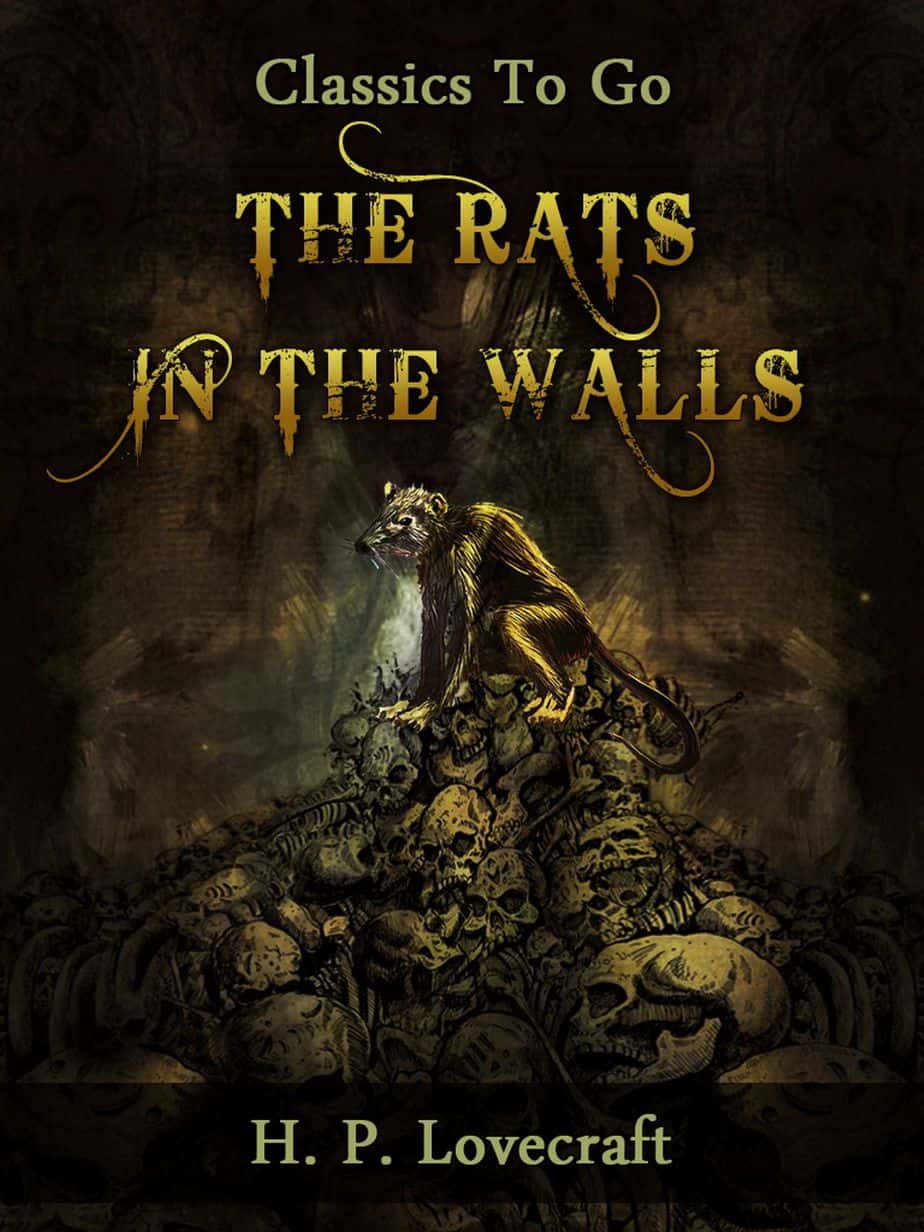If you’re a fan of Renovation Rescue or Extreme Makeover: Home Edition and think you’ve seen some good horror stories, you might consider turning brief attention to the story of H.P. Lovecraft, and I don’t actually mean his tragic life story in which he only achieved fame after an early, lonely death; I’m talking about the one in which a guy decides to restore his ancestral home after the death of his only son only to find he is hated by the locals… For creepy reasons which are none of his own fault. Then things get far, far worse.
Kingsley Amis said that this story achieves ‘a memorable nastiness’. Other short stories that have had this same effect on me: “Singing My Sister Down” by Margo Lanagan and “The Lottery” by Shirley Jackson.
A lot has already been said about “The Rats In The Walls“, not least in the Wikipedia entry.
“The Rats In The Walls” is a great example of a story which has been woven out of an Urban Legend: The Piltdown Man.
The Piltdown Man was a hoax in which bone fragments were presented as the fossilised remains of a previously unknown early human. These fragments consisted of parts of a skull and jawbone, said to have been collected in 1912 from a gravel pit at Piltdown, East Sussex, England.
See also: Will the Piltdown Man Hoax Finally be Solved? from Mysterious Universe

WHAT HAPPENS IN THE STORY?
- The first person narrator has spent lots of time and money restoring an ancestral castle which has fallen into disrepair. (Exham Priory.) See this post on Gothic tropes, including Gothic houses.
- There has been some horrible tragedy take place in this mansion. The only one left alive (the third son) is the narrator’s direct ancestor. This guy was accused of the murders.
- The crown took possession of the property after that.
- It’s been studied for its interesting Gothic architecture.
- Narrator lost everything in the civil war. Their home burned down when he was seven.
- After that they all moved North where his mother had come from.
- As a middle-aged man he is wealthy.
- In 1904 his father died.
- His only son died two years after returning injured from WW1.
- He has no wife, either. The boy grew up without a mother. Basically, this narrator is all alone in the world.
- In the war, before he died, the son heard a few things about his own ancestry which had been lost within the lore of the family concerned. The son was merely amused by them.
- Narrator purchased Exham Priory in 1918. But his son’s return from the war distracted him from the restoration job. That said, a couple of years later he decided to devote himself to it.
- His friend, Norrys, learns before he dies that the place is built on top of some (ante-) Druid thing which would date back to the time of Stonehenge. It housed some monks. Norrys is the friend he lived with while the restoration was going on.
- According to rumours, the family in that house have a history of losing the men early, replaced by a ‘more typical scion’. Implication being, the boys in this family tend to kill their own fathers in order to be the boss of the joint. An ‘inner cult’.
- There are other stories too, like graveyard stenches and wails and howlings. Our narrator takes much less notice of those stories.
- It is a bit concerning that a bunch of peasants have gone missing over the years. That said, in medieval times peasants going missing wasn’t all that unusual.
- The people who lived at that time believed in a ‘bat-winged devil’ who kept Witches’ Sabbath each night. There was also a legion of rats, who burst from the castle three months after the big tragedy that lead to its desertion. This army devoured everything in its path including pets and two ‘hapless human beings’. (See The Legend of the Pied Piper for another story about a hoard of destructive rats.)
- So he moves in in 1923, with 7 servants and 9 cats. He loves cats. He even calls the eldest one ‘Nigger-man’. (As a cat name, this seems to have fallen out of fashion for some reason.)
- In a storytelling reveal, he learns the essential truth — that his ancestor escaped to England after murdering his family, but caused no more trouble over there. What made him snap?
- The cat has the heebie jeebies in this house.
- A servant reports that all of the cats have got the spooks.
- In the middle of the night he’s woken up by that favourite cat, and they can hear rats.
- Next morning it seems no one else has heard it though.
- Next night, same thing. He’s set down a trap and the trap is sprung but hasn’t caught anything. (Lovecraft is making use of the Rule of Three in storytelling.)
- Norrys comes round to check out the joint with his lantern at the place where the black cat is agitating.
- They find a vault.
- They think of leaving this place altogether but after discussing it they make a trip to London to find the expertise of archeologists and scientists to help them work out what this thing is.
- These men don’t scoff and are interested in the story. Five of them decide to go back with the two men and look for themselves.
- Back in America at the old house, the servants tell the men that nothing weird happened in their absence.
- The narrator is disturbed overnight but no one else has been, each in their own guest rooms. The psychic says, unhelpfully, that he’s now been shown whatever it was he was meant to see.
- In the late morning the seven men take powerful electric searchlights and excavation tools down to the sub-cellar and bolt the door behind them. They take the black cat in case of rats. Three of the savants have already seen some rats. They examine the central altar and one of the men causes the whole thing to tilt backwards. There seems to be a force behind it, saving it from falling over entirely.
- They’re all spooked by this but they’re mentally prepared. Then they find some human bones which look like they’ve been… gnawed… by rats.
- The scientist works out the passage they find has to have been chiselled from below.
- They find a light at the end of the passage and see an amazing twilit grotto stretching further than the eye can see. There is also ‘an insane tangle of human bones’.
- ‘Horror piled on horror’ when they find four-legged skeletons, including some with two legs, which had been kept in stone pens. They’ve been fed the ‘coarse vegetables’ that used to grow on the vast estate and it explains why the Romans had such big gardens.
- Norrys goes into one of the buildings and even though he has seen the horrors of war, he’s disturbed by the butcher shop and kitchen in there.
- The narrator ventures into a different building with no door and finds ten stone cells with rusty bars. He also finds a seal ring with his own family’s coat of arms. Others find more cells and a crypt with bones arranged in some sort of order, carved with inscriptions in Latin and Greek.
- One of the doctors opens up a grave and notes that the skulls are somewhere between human and ape.
- The cat isn’t worried about any of this.
- And then the men go missing, everyone but ‘the plump Capt. Norrys. The cat is spooked now and darts past ‘like a winged Egyptian god’. The rats are after them.
- The narrator seems to be temporarily possessed and hates everything and everyone and seems to want to take revenge upon his best friend.
- Three hours later he is found, crouching in the dark over the plump, half-dead body of Capt. Norrys. His own black cat is tearing at his throat.
- Exham Priory’s been blown up. The cat’s been taken off him and our narrator writes this story from prison.
- It’s revealed that one of the expert men is in the cell next door, but the two are not allowed to speak.
TECHNIQUE OF NOTE
Although the narrator knows the entire story before he begins the telling of it, he drip feeds us salacious details to keep us reading on. A super common technique. Easier said than done, though, as a writer, because at some point the decision has to be made: What to reveal and when? In order:
- The narrator’s ancestor murdered everyone in the mansion
- There was some family cult that spanned generations, in which fathers disappeared mysteriously
- The mass murder happened after some revelation, and it wasn’t everyone after all — he spared a few of the servants
- The slaughter included a father, three brothers, and two sisters and the perpetrator escaped under disguise.
The masterful thing Lovecraft does is he amends the detail. Folklore would have it that the ancestor killed everyone; upon closer examination we learn he spared a few. So it wasn’t so bad… and rumour is never a hundred per cent true. Hang on. That’s still pretty bad! We also achieve verisimilitude, because we’ve all experienced finding out the truth behind a rumour, learning that some parts have been exaggerated; in this case the exaggerations pale in comparison to other horrific revelations.
SYMBOLISM
The cellar in this story is a classic example of the labyrinthine cellar at the bottom of a tower — unbound by the four earth walls behind it, leading to a vast kingdom no one above ground has any idea about.
See Gaston Bachelard’s Symbolism Of The Dream House.
The symbol of the Labyrinth goes all the way back to Greek mythology, in which a scary part-man, part-bull Minotaur lives down there.
This labyrinthine, underground cavern continues to be used in stories even today. Under The Dome, the TV series inspired by the Stephen King novel, utilises the underground labyrinth also:

“The Rats In The Walls” also makes use of The Chimera and uses a variety of unidentifiable skeletons, some of them between human and ape, to spook us. We like to put things and people into easily understood categories. Perhaps this partly explains phenomena such as transphobia: centuries of terrifying stories about creatures who span between categories.
IDEA FOR A REMAKE


